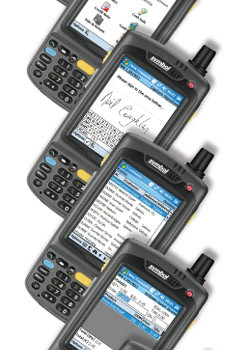The law of mobility

A theory perfected in the US, the ‘law’ states the value of a product or service increases with its mobility. Lucky then that mobile solutions providers are focusing on the retail sector
12 October 2009
A focus on mobility will allow businesses to “compete and win in the next technology revolution.”
That’s the verdict of Russell McGuire, director of strategy for US telecommunications giant Sprint and author of The Power of Mobility.
In fact, mobility is so essential in McGuire’s view he’s turned it into a quasi-law of physics.
“The law of mobility states that the value of any product or service increases with its mobility,” he writes. “Improvements typically realised from a mobile solution include a reduction of paper, streamlining of non-value added and redundant processes, an increase in overall productivity, elimination of manual processes, reduced labour costs and overtime, and increased quality and reliability of information.”
All great news for retailers, considering that according to Niall Cannon of IT Providers: “The larger players in the market, such as Motorola and Intermec, have made a strategic decision to focus more on the retail sector.” Following extensive research and development by the large handheld manufacturers, he says, “cheaper, more robust and functionally richer devices” are now available on the market.
Law-abiding
But just how can retailers best work the ‘law of mobility’ to their advantage on the shop floor? One of the most exciting developments to facilitate this in recent times, according to Cannon, is “the emergence of handheld devices that combine credit card processing and retail operations into the one small device.” Basically, solutions such as these would allow staff to drastically reduce customers’ queuing time by enabling them to take credit card payments on the spot anywhere in a store.
Cannon believes the results could be potentially phenomenal. “These devices will revolutionize self-shopping and queue busting applications as they have the potential to place a fully functional point of sale into the hand of the retailer or indeed the consumer.”
While this particular application may not be ideal for every retailer, there are many other areas of in-store management where handheld solutions can make a valuable contribution. And it’s important to note that such seemingly high-tech devices will not just be ready way off in the distance; they’re available in Ireland now.
“Bluetooth and other wireless connections to mobile printers make on-demand printing on the shop floor a reality,” says Cannon. “Stores with a wireless local area network in place can now begin to exploit this infrastructure more with handheld computers.”
Currently, IT Providers offers retailers a range of MobileData handheld solutions, which can perform “all key store operations.” This includes being able to review store performance, order stock, manage waste, stock-take and print shelf edge labels. Such solutions are all barcode driven and can also be integrated with key business management applications and accounting systems, according to the retailer’s preference.
Good timing
Saving time for retailers working round-the-clock hours is a key goal for such applications. For example, when retailers are placing an order for stock on a MobileData handheld device they are able to review performance, scan and order at the shelf or in the storeroom. In other words, no need for paper lists or trips to and fro from the back office. Cannon adds: “Retailers can also choose to smooth their order out over a number of deliveries.”
Staff can subsequently “perform faster more accurate stock takes without interrupting trade.” High value or perishable items can also be monitored more closely, by using continuous cyclical counts.
It’s not surprising IT companies are keen to explain the advantages of their product portfolios. Retailer and wholesaler feedback has also given handheld devices a good review however. One independent which has praised such developments, is Sandwich Supreme, a sandwich manufacturer and wholesaler based in the north.
Electronically efficient
The company which employs five delivery drivers to distribute its sandwich orders, realised handheld devices could prove highly beneficial when some of its larger customers began to request electronic invoices instead of handwritten receipts. Rather than employing extra staff to enter the invoices electronically, managing director Hazel McDermott decided to investigate electronic mobile sales solutions.
She opted for the Casio IT-3000 handheld terminal running BNE Electronics VanPOS software, to achieve her aim. Each driver now takes a handheld device with them as they visit customers to deliver and return stock. This delivers a number of advantages over and beyond delivering electronic receipts what’s more. The customer route is calculated on the terminals, indicating which order to make deliveries in. Any sandwiches sold or returned are scanned and the customer signs for the stock on the IT-3000’s touch screen. The terminal can then issue either a signed delivery note or an invoice depending on the customer’s preference. It can also then be entered into the handheld system whether or not the customer paid at the time, and the customer and driver both receive a receipt to eliminate disputes about payment.
Back in the office, all transactions are downloaded into Sage accounting software, from where customer invoices are sent electronically. Details including each drivers’ mileage and payments record can also be electronically saved and used to calculate the correct amount a driver should receive for any particular shift.
Instant mastery
“The system has paid for itself in less than one year,” according to McDermott, because she didn’t “need to employ additional staff to cope with the requests for electronic invoices.” Another crucial advantage of this system is that it requires very little training. Instead it is largely intuitive and removes the need for drivers to make any mathematical calculations. This means that when the firm employs new drivers, they are able to learn the system very quickly, increasing their effectiveness from day one.
IT Providers’ Niall Cannon confirms handheld equipment is not difficult to use, even for those who are not particularly technology-minded. “Anyone with experience of using Windows personal computers and/or a mobile phone can easily make the transition to handhelds,” he says. This is the case because “the majority of handhelds now use a mobile derivative of the Windows operating system.” He adds retailer feedback is examined “at all stages” in order to create easy-to-use software solutions, alongside a comprehensive support programme.
This approach has enabled the company to expand quickly since it first started supplying handheld solutions to Irish retailers back in 2004. It has now built up an end-user base in excess of 1,000, and supplies solutions to SuperValu and Centra stores, alongside independent fashion and specialist retailers.
Cannon adds: “The last end-user survey of our users resulted in very positive feedback. We won a Best Retail Technology ShelfLife award for the first version of the MobileData ordering application. Since then the user base for our handheld solutions has trebled in size.”
Price matters
As Sandwich Supreme’s experience through working with BNE Electronics has shown, the advantages of implementing handheld terminals are numerous. In the current economic climate however, the prime consideration on many retailers’ minds is cost.
On this front, Cannon has some good news. “As with all technologies the cost of handheld hardware is reducing all of the time, in line with the reduction people see in other computing hardware.” However, he believes there are several investments which are worth paying for now in order to reap the dividends later.
Indeed, a recent poll by PricewaterhouseCoopers shows many retailers are not simply content to stagnate during the current recession, but want to continue to develop their businesses and keep up with best practice; 54% of those surveyed said they are planning store expansions in the year ahead, and 15% said they will be pursuing merger or acquisition opportunities.
In this context, Cannon believes pursuing a false economy through purchasing less sturdy devices will not prove cost-effective in the long-term. “The harsh retail environment will always demand that the retailer pays a premium for rugged handheld devices,” he explains.
“Some of our so called competitors purporting to offer handheld solutions attempt to keep the specification of the handheld hardware low. They deliver solutions on inferior non-rugged handheld devices. In the long run these devices will break down and need to be replaced. An investment in rugged hardware specifically designed and rated for use in retail stores will pay back in the long term.”
He views investing in a wireless in-store network as another worthwhile measure, which will enable stores to “benefit from the full potential of handheld retail solutions.” He points out however, “The investment required to carry out a proper site survey and the subsequent implementation of a wireless network are costs that should be borne in mind.”
Innovative investment
On the subject of costs, it should be noted that while companies such as Sandwich Supreme have witnessed a return on investment in less than a year, Cannon says ROI is not always easy to calculate. “It depends on many factors. There is no straight answer to the question because it will depend what store operations they decide to migrate from the back office personal computers onto a handheld. It also depends on what their initial investment is; keeping capital investment to a minimum will result in a faster return on the initial investment.”
Vision is also necessary, he says, “to see what existing store operations can be mobilised.” Retailers should then “demand partners like IT Providers give them the solutions, as efficiently as possible.” And while the entirely retail focused company is always on the look-out for “new opportunities for mobilising retail workers,” he believes, “the most innovative suggestions always come from retailers working at the coal face.”
IT Providers has also offered its handheld solutions on a pay-per-use and software-as-a-service model for many years. Says Cannon: “This means that the upfront capital costs are greatly reduced and the retailer pays for the software, service and support on an ongoing monthly basis. This significantly reduces the upfront capital investment required and eases cash flow difficulties. None of these models are delivered with the interference of any third party financial institutions; the agreement is between us and the retailer.”
Looking at the various advantages mobile kit can deliver, it’s not hard to fathom why so many retailers have already signed up to follow its dictates. It is the law, afterall.



 Print
Print






Fans 0
Followers